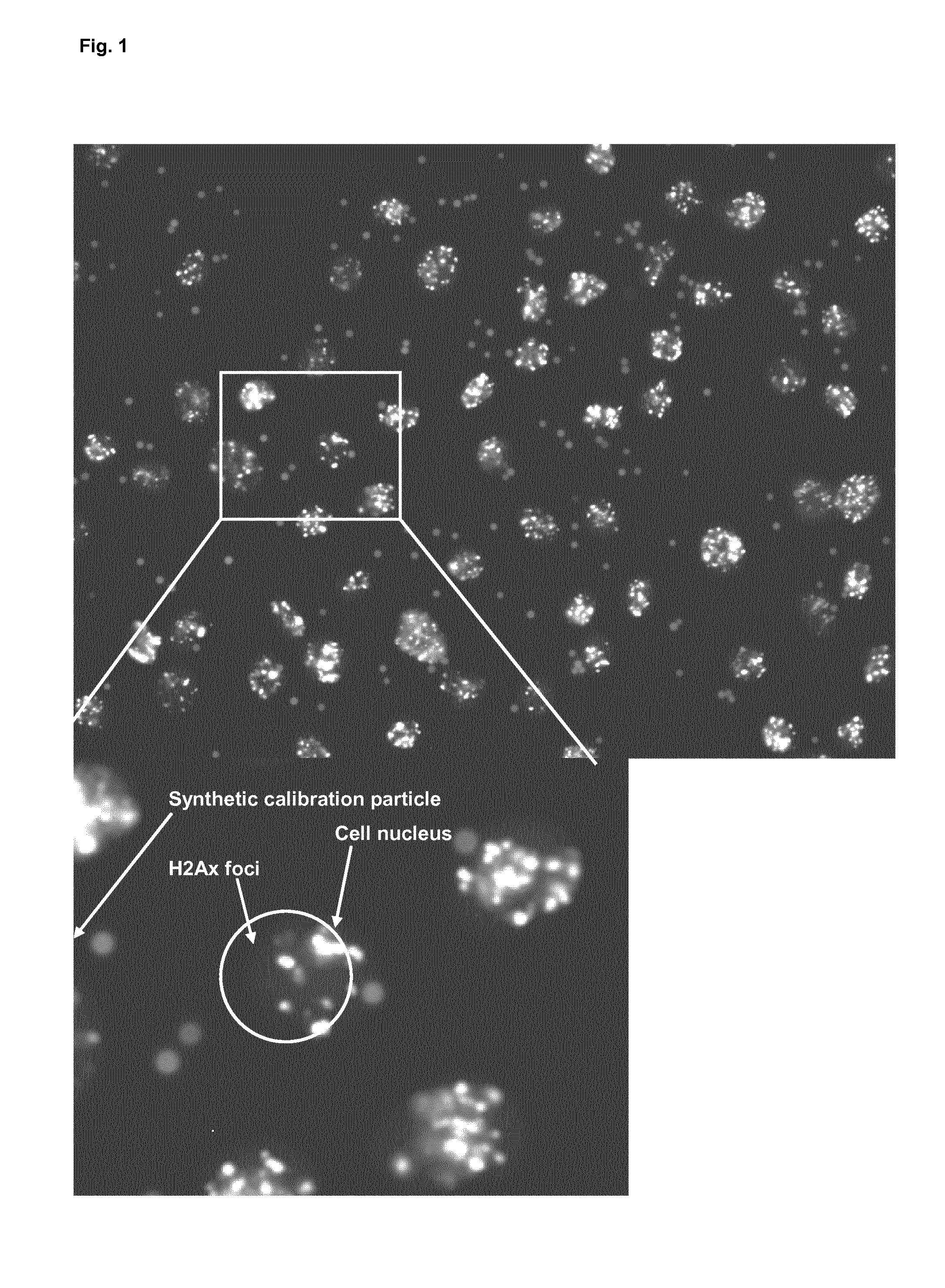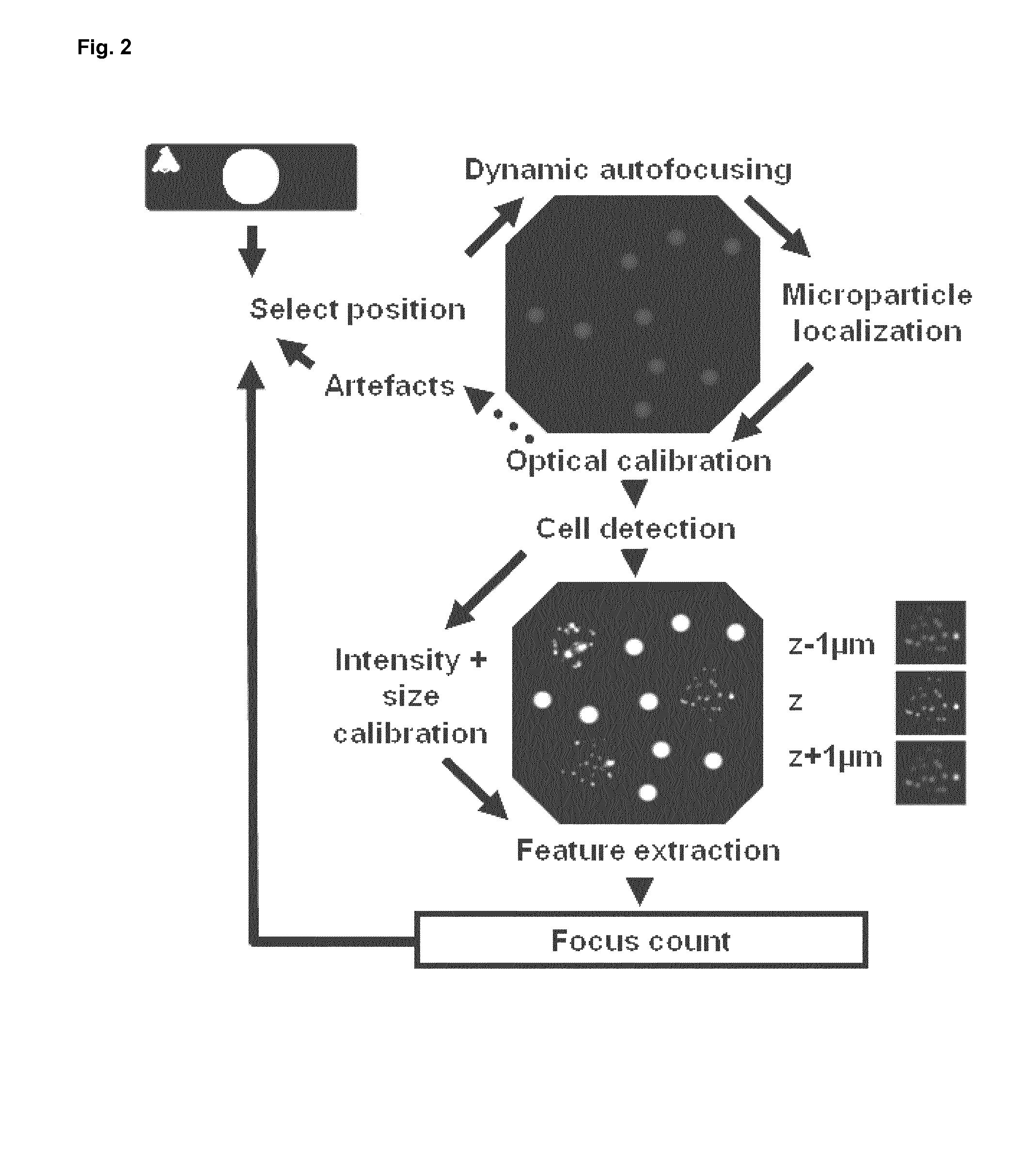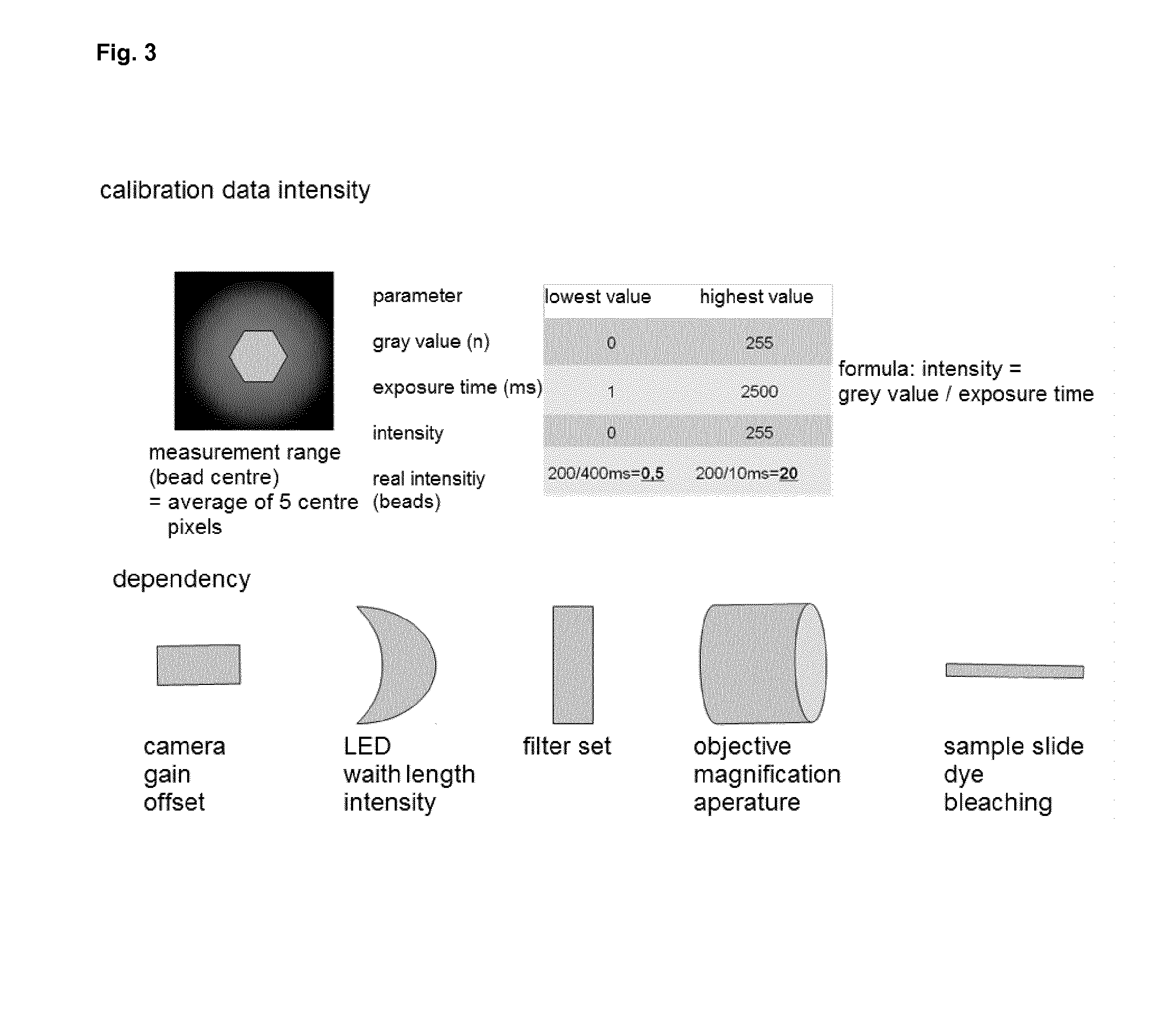Methods and system for the automated determination of immunofluorescent foci using a cell-based immunofluorescence assay using synthetic calibration particles
a cell-based immunofluorescence and automated determination technology, applied in the field of bioassays and diagnostics, can solve the problems of inability to describe reliable methods for standardising the assessment of the number of fluorescent foci, and achieve the effects of improving the accuracy of diagnosis of disease, increasing the number of dna double strand breaks, and accurate and reliable measurement of fluorescent foci
- Summary
- Abstract
- Description
- Claims
- Application Information
AI Technical Summary
Benefits of technology
Problems solved by technology
Method used
Image
Examples
example 1
Demonstration of the Method Described Herein for Automated Determination of Immunofluorescent Foci by Means of an Immunofluorescence Assay Using Synthetic Calibration Particles
Immobilization of the Calibration Microparticles on Slides
[0073]Glass slides were coated with 10 μl per application spot of poly-lysine (Sigma, 5 μg / ml) were incubated for 4 hours in a moist incubation chamber. After rinsing the non bound poly-lysine from the slides using PBS, 10 μl of the calibration microparticle suspension (6000 calibration microparticles per application spot) were pipetted to the moist application spots. This suspension was subsequently dried under a sterile hood and allowed to rest on the slide overnight.
Preparation of Lymphocyte Suspension for the Detection of DSB in Peripheral Mononuclear Blood Cells
[0074]The blood sample of a test subject was inverted two times. 3 ml of uncoagulated blood (ratio 1:1) was pipetted onto the separation membrane of a centrifugation tube and subsequently ce...
example 2
Demonstration of the Use of the Method as Described Herein for Determining the Number of DNA Double Strand Breaks in Cells, for Determining DNA Damage or for Determining Radiation Exposure of a Cell and / or Cell Population to Ionizing or any Other Kind of Radiation
[0085]188Re-perrhenate (188Re) was obtained by elution of a 40 GBq alumina based 188W / 188Re generator (ITG, München, Germany). The physical characteristics of 188Re are: physical half life 16.9 h, maximal beta energy 2.1 MeV, gamma emission 155 keV (15% abundance). The generator was eluted with 5 ml of 0.9% saline to achieve activity concentrations of about 1.0 GBq / ml of carrier free 188Re.
Cell Culture
[0086]The thyroid rat cell line PC CI3 (Clinical Cooperation Unit Nuclear Medicine, DKFZ, Heidelberg, Germany) is a sodium iodine symporter (NIS) positive subline of the FRTL5 cell line available in the American Type Culture Collection (ATCC). The cells were routinely grown as adherent monolayer in Ham's F12 medium...
PUM
| Property | Measurement | Unit |
|---|---|---|
| diameter | aaaaa | aaaaa |
| diameter | aaaaa | aaaaa |
| diameter | aaaaa | aaaaa |
Abstract
Description
Claims
Application Information
 Login to View More
Login to View More - R&D
- Intellectual Property
- Life Sciences
- Materials
- Tech Scout
- Unparalleled Data Quality
- Higher Quality Content
- 60% Fewer Hallucinations
Browse by: Latest US Patents, China's latest patents, Technical Efficacy Thesaurus, Application Domain, Technology Topic, Popular Technical Reports.
© 2025 PatSnap. All rights reserved.Legal|Privacy policy|Modern Slavery Act Transparency Statement|Sitemap|About US| Contact US: help@patsnap.com



